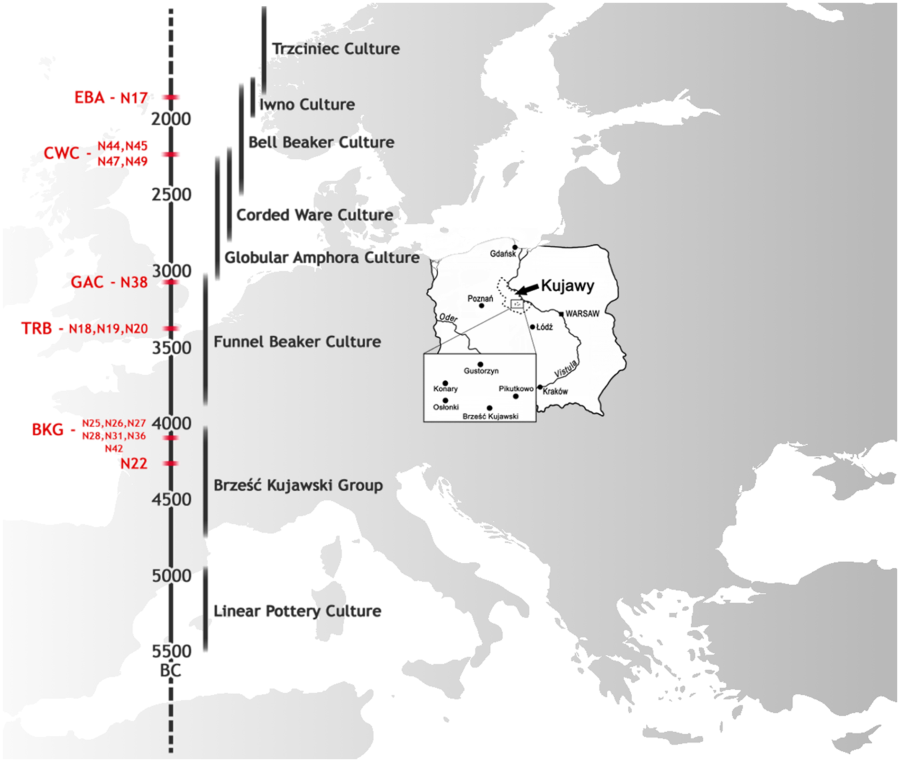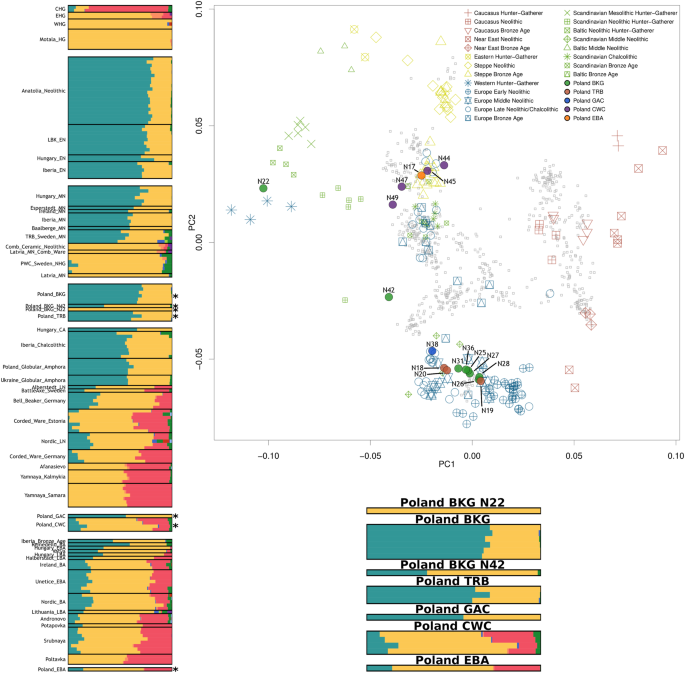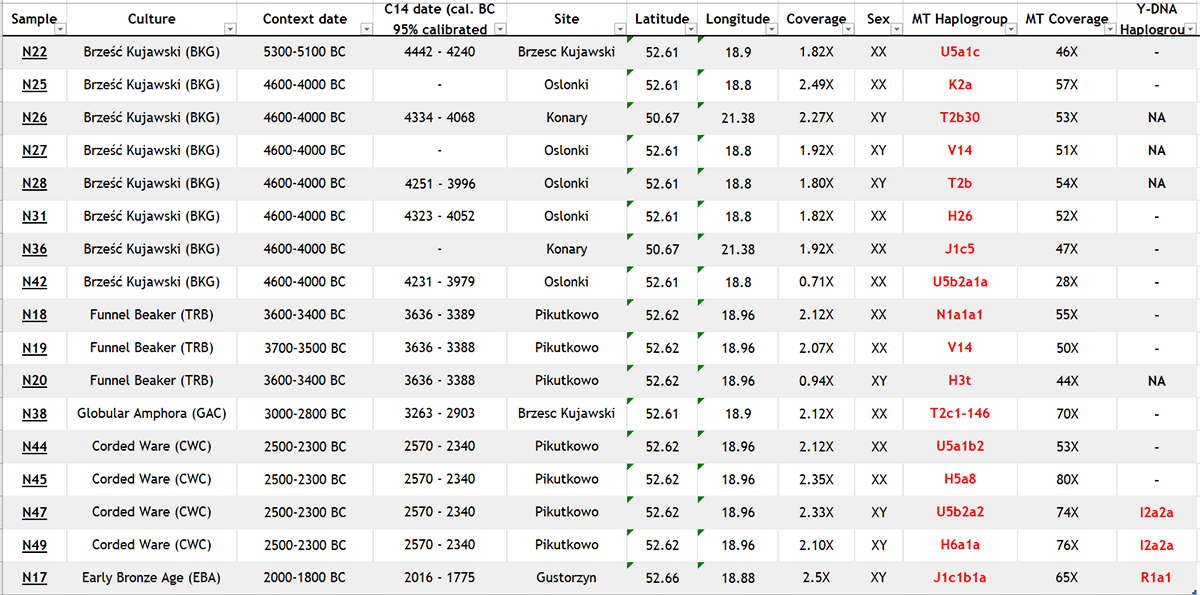Angela
Elite member
- Messages
- 21,823
- Reaction score
- 12,328
- Points
- 113
- Ethnic group
- Italian
bicicleur
A genomic Neolithic time transect of hun
Ancient DNA genome-wide analyses of Neolithic individuals from central and southern Europe indicate an overall population turnover pattern in which migrating farmers from Anatolia and the Near East largely replaced autochthonous Mesolithic hunter-gatherers. However, the genetic history of the Neolithic transition in areas lying north of the European Neolithic core region involved different levels of admixture with hunter-gatherers. Here we analyse genome-wide data of 17 individuals spanning from the Middle Neolithic to the Early Bronze Age (4300-1900 BCE) in order to assess the Neolithic transition in north-central Poland, and the local impacts of hunter-farmer contacts and Late Neolithic steppe migrations. We evaluate the influence of these on local populations and assess if and how they change through time, reporting evidence of recurrent hunter-farmer admixture over three millennia, and the co-existence of unadmixed hunter-gatherers as late as 4300 BCE. During the Late Neolithic we report the appearance of steppe ancestry, but on a lesser scale than previously described for other central European regions, with evidence of stronger affinities to hunter-gatherers than to steppe pastoralists. These results help understand the Neolithic palaeogenomics of another central European area, Kuyavia, and highlight the complexity of population interactions during those times.
https://www.nature.com/articles/s41598-018-33067-w


A genomic Neolithic time transect of hun
Ancient DNA genome-wide analyses of Neolithic individuals from central and southern Europe indicate an overall population turnover pattern in which migrating farmers from Anatolia and the Near East largely replaced autochthonous Mesolithic hunter-gatherers. However, the genetic history of the Neolithic transition in areas lying north of the European Neolithic core region involved different levels of admixture with hunter-gatherers. Here we analyse genome-wide data of 17 individuals spanning from the Middle Neolithic to the Early Bronze Age (4300-1900 BCE) in order to assess the Neolithic transition in north-central Poland, and the local impacts of hunter-farmer contacts and Late Neolithic steppe migrations. We evaluate the influence of these on local populations and assess if and how they change through time, reporting evidence of recurrent hunter-farmer admixture over three millennia, and the co-existence of unadmixed hunter-gatherers as late as 4300 BCE. During the Late Neolithic we report the appearance of steppe ancestry, but on a lesser scale than previously described for other central European regions, with evidence of stronger affinities to hunter-gatherers than to steppe pastoralists. These results help understand the Neolithic palaeogenomics of another central European area, Kuyavia, and highlight the complexity of population interactions during those times.
https://www.nature.com/articles/s41598-018-33067-w




